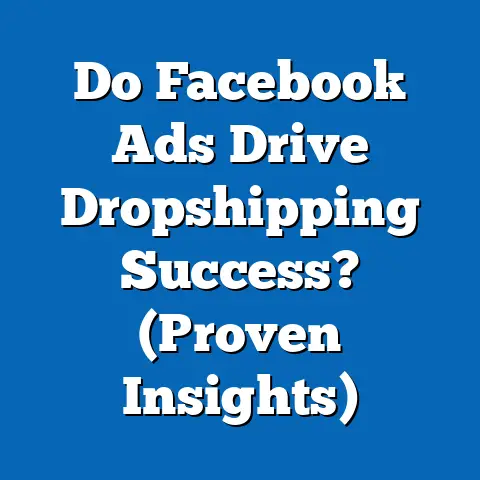Maximize Conversions with Facebook Ad Pixels (Pro Secrets)
In today’s digital landscape, Facebook advertising reigns supreme as a powerful tool for businesses of all sizes. But simply throwing money at ads and hoping for the best is a surefire way to drain your marketing budget. The secret to unlocking true ROI lies in understanding and leveraging the power of data, and that’s where the Facebook Ad Pixel comes in. Paired with visually striking and bold ad designs, the Pixel can become your ultimate conversion-boosting weapon. Think of it this way: captivating visuals grab attention, while the Pixel ensures you’re showing those visuals to the right people and optimizing for the actions that matter most. In this guide, I’ll share pro secrets to help you master the Facebook Ad Pixel and create a synergy with your ad designs that leads to significant conversion improvements.
Understanding Facebook Ad Pixels
At its core, the Facebook Ad Pixel is a small snippet of code that you place on your website. This seemingly simple piece of code acts as a silent observer, tracking the actions of visitors who land on your site after clicking on your Facebook ads. It’s like having a digital detective that reports back to Facebook, providing invaluable insights into user behavior.
What Does the Pixel Track?
The beauty of the Facebook Ad Pixel lies in its versatility. It can track a wide range of user actions, including:
- Page Views: Knowing which pages users are visiting helps you understand their interests and the effectiveness of your ad copy and targeting.
- Add to Cart: This is a critical indicator of purchase intent. Tracking “Add to Cart” events allows you to retarget users who showed interest but didn’t complete the purchase.
- Initiate Checkout: Another key step in the purchase funnel. Identifying users who started the checkout process can help you optimize your checkout flow and reduce cart abandonment.
- Purchases: The holy grail! Tracking purchases allows you to measure your return on ad spend (ROAS) and identify your most profitable campaigns.
- Lead Generation: If your goal is to collect leads, the Pixel can track form submissions, newsletter sign-ups, and other lead-generating actions.
- Custom Events: The Pixel allows you to define custom events that are specific to your business. For example, you might track video views, button clicks, or downloads.
How Does It Work?
When someone clicks on your Facebook ad and lands on your website, the Pixel drops a cookie on their browser. This cookie allows Facebook to track their actions as they navigate your site. The Pixel then sends this data back to Facebook, where it’s used to:
- Optimize Your Ads: Facebook uses Pixel data to learn who is most likely to convert based on your ad campaigns. It then uses this information to show your ads to similar users, improving your overall ad performance.
- Retarget Users: As I mentioned earlier, you can use Pixel data to retarget users who have interacted with your website but haven’t converted. This allows you to re-engage them with targeted ads that encourage them to complete the desired action.
- Measure Conversions: The Pixel provides accurate conversion tracking, allowing you to see which ads are driving the most sales and leads.
Technical Setup: A Quick Guide
Installing the Facebook Ad Pixel might sound daunting, but it’s actually quite straightforward. Here’s a quick overview:
- Create a Pixel: In your Facebook Ads Manager, navigate to the “Pixels” tab and click “Create Pixel.”
- Name Your Pixel: Give your Pixel a descriptive name so you can easily identify it later.
- Install the Pixel Code: Facebook will provide you with a base code that you need to install on every page of your website. You can either manually insert the code or use a plugin or integration if your website platform supports it (e.g., WordPress, Shopify).
- Add Event Codes: To track specific actions, you need to add event codes to the relevant pages of your website. For example, you would add the “Purchase” event code to your order confirmation page.
- Verify Your Pixel: Use the Facebook Pixel Helper Chrome extension to verify that your Pixel is installed correctly and tracking events properly.
Takeaway: The Facebook Ad Pixel is your eyes and ears on your website, providing valuable data that can be used to optimize your ad campaigns and drive conversions. Don’t underestimate its power!
The Impact of Bold Design in Ads
While the Pixel works behind the scenes, your ad design is what captures attention in the first place. In a world saturated with content, your ads need to be visually arresting to stand out from the noise. This is where bold design comes into play.
The Psychology of Bold Design
Bold designs aren’t just about aesthetics; they’re rooted in psychology. Here’s why they work:
- Attention-Grabbing: Bold colors, striking typography, and unexpected layouts immediately grab the viewer’s attention. They interrupt the scrolling pattern and force the eye to focus on the ad.
- Emotional Connection: Bold designs can evoke strong emotions, whether it’s excitement, curiosity, or even a sense of urgency. This emotional connection makes the ad more memorable and increases the likelihood of engagement.
- Brand Recognition: Consistent use of bold design elements can help build brand recognition and create a distinct visual identity.
- Clarity and Impact: Bold designs often simplify the message, making it easier for viewers to understand the key benefits of your product or service.
Examples of Successful Bold Ad Campaigns
I’ve seen countless brands use bold design to great effect. Here are a few examples that stand out:
- Nike: Nike is known for its minimalist yet powerful ad designs. They often use bold typography and striking imagery to convey a sense of athleticism and empowerment.
- Apple: Apple’s product ads are always clean and visually appealing, but they also use bold colors and innovative layouts to highlight the unique features of their products.
- Old Spice: Old Spice’s ads are known for their humor and over-the-top visuals. They use bold colors, quirky characters, and unexpected scenarios to create memorable and engaging ads.
Integrating Bold Design with Pixel Data
The real magic happens when you combine bold design with the insights from your Facebook Ad Pixel. Here’s how:
- Identify High-Converting Design Elements: Use A/B testing to experiment with different bold design elements (e.g., color schemes, fonts, layouts) and track their impact on conversions using the Pixel.
- Personalize Ads Based on User Behavior: Use Pixel data to segment your audience and create personalized ads with bold designs that resonate with their specific interests and needs. For example, if a user has viewed a particular product on your website, you can retarget them with an ad featuring that product and a bold call-to-action.
- Optimize Ad Placement: Use Pixel data to determine which ad placements (e.g., Facebook News Feed, Instagram Stories) are driving the most conversions for your boldest designs. This allows you to focus your efforts on the most effective placements.
Takeaway: Bold design is a powerful tool for capturing attention and creating an emotional connection with your audience. When combined with the data-driven insights from your Facebook Ad Pixel, it can significantly improve your ad performance and drive conversions.
Setting Up Your Facebook Ad Pixel for Success
Now that you understand the importance of the Facebook Ad Pixel, let’s dive into the practical steps of setting it up for success.
Step-by-Step Guide to Creating and Configuring Your Pixel
- Navigate to the Pixels Tab: In your Facebook Ads Manager, click on the “Events Manager” in the left-hand menu, then select “Pixels.”
- Create a New Pixel: If you don’t already have a Pixel, click the “Create Pixel” button.
- Name Your Pixel: Give your Pixel a descriptive name that reflects your business or website.
- Choose Your Installation Method: Facebook offers three installation methods:
- Manually Add Pixel Code to Website: This option requires you to copy and paste the base code onto every page of your website.
- Use a Partner Integration: If you’re using a popular website platform like WordPress, Shopify, or Wix, you can use a partner integration to easily install the Pixel.
- Email Instructions to a Developer: If you’re not comfortable installing the Pixel yourself, you can email the installation instructions to your web developer.
- Install the Base Code: Follow the instructions for your chosen installation method to install the base code on your website.
- Add Event Codes: Once the base code is installed, you need to add event codes to track specific actions on your website. You can choose from standard events (e.g., Purchase, Add to Cart, Lead) or create custom events.
- Test Your Pixel: Use the Facebook Pixel Helper Chrome extension to verify that your Pixel is installed correctly and tracking events properly.
- Manually Add Pixel Code to Website: This option requires you to copy and paste the base code onto every page of your website.
- Use a Partner Integration: If you’re using a popular website platform like WordPress, Shopify, or Wix, you can use a partner integration to easily install the Pixel.
- Email Instructions to a Developer: If you’re not comfortable installing the Pixel yourself, you can email the installation instructions to your web developer.
Defining Conversion Events
Defining conversion events is crucial for accurately tracking your ad performance. Here are a few tips:
- Focus on Key Actions: Identify the most important actions that you want users to take on your website, such as making a purchase, submitting a form, or signing up for a newsletter.
- Use Standard Events When Possible: Facebook provides a set of standard events that are commonly used by businesses. Using these standard events makes it easier for Facebook to optimize your ads.
- Create Custom Events When Necessary: If you need to track actions that aren’t covered by standard events, you can create custom events.
- Assign Values to Conversions: If possible, assign values to your conversions. This will allow you to track your return on ad spend (ROAS) and identify your most profitable campaigns.
Ensuring Accurate Data Tracking
Accurate data tracking is essential for making informed decisions about your ad campaigns. Here are a few best practices:
- Test Your Pixel Regularly: Use the Facebook Pixel Helper Chrome extension to verify that your Pixel is tracking events properly.
- Check Your Data in Ads Manager: Regularly check your data in Facebook Ads Manager to ensure that it’s accurate and consistent.
- Troubleshoot Common Issues: If you encounter any issues with your Pixel, consult the Facebook Ads Help Center for troubleshooting tips.
Takeaway: Setting up your Facebook Ad Pixel correctly is essential for accurate data tracking and effective ad optimization. Take the time to configure your Pixel properly and ensure that it’s tracking the events that matter most to your business.
Analyzing Data from Your Facebook Ad Pixel
Once your Pixel is up and running, the real work begins: analyzing the data it collects. Understanding this data is crucial for making informed decisions about your ad design and targeting strategies.
Interpreting Pixel Data
- Conversions: The total number of conversions that resulted from your ads.
- Conversion Rate: The percentage of users who clicked on your ad and then completed a conversion event on your website.
- Cost Per Conversion: The average cost of each conversion.
- Return on Ad Spend (ROAS): The amount of revenue generated for every dollar spent on advertising.
- Website Traffic: The number of users who visited your website after clicking on your ad.
- Page Views: The number of pages viewed by users who clicked on your ad.
- Time on Site: The average amount of time that users spent on your website after clicking on your ad.
- Bounce Rate: The percentage of users who left your website after viewing only one page.
Key Performance Indicators (KPIs)
To effectively analyze your Pixel data, it’s important to focus on the KPIs that are most relevant to your business goals. Here are a few examples:
- E-commerce: Conversion Rate, Cost Per Conversion, ROAS
- Lead Generation: Cost Per Lead, Lead Quality, Conversion Rate from Lead to Customer
- Brand Awareness: Website Traffic, Page Views, Time on Site
Using Data to Make Informed Decisions
The ultimate goal of analyzing your Pixel data is to make informed decisions about your ad design and targeting strategies. Here are a few examples:
- Identify High-Performing Ads: Analyze your data to identify the ads that are driving the most conversions and revenue.
- Optimize Your Targeting: Use Pixel data to refine your targeting and show your ads to the users who are most likely to convert.
- Improve Your Ad Design: Use A/B testing to experiment with different ad designs and track their impact on conversions.
- Optimize Your Landing Pages: Use Pixel data to identify areas where your landing pages can be improved to increase conversions.
Takeaway: Analyzing your Facebook Ad Pixel data is essential for understanding your ad performance and making informed decisions about your advertising strategy. By tracking the right KPIs and using data to optimize your ads, you can significantly improve your conversion rates and ROI.
Optimizing Ads Based on Pixel Data
The final piece of the puzzle is using the insights from your Pixel data to optimize your ads for better performance. This is an ongoing process of testing, analyzing, and refining your ad designs and targeting strategies.
Refining Ad Designs
Pixel data can provide valuable insights into which ad designs are most effective at driving conversions. Here are a few strategies for refining your ad designs based on Pixel data:
- A/B Testing: Use A/B testing to experiment with different ad designs and track their impact on conversions. Test different headlines, images, call-to-actions, and other design elements.
- Analyze Heatmaps: Use heatmap tools to see where users are clicking and scrolling on your landing pages. This can help you identify areas where your design can be improved to increase conversions.
- Gather User Feedback: Ask users for feedback on your ad designs. This can provide valuable insights into what they like and don’t like about your ads.
A/B Testing Bold Design Elements
When it comes to bold design, A/B testing is your best friend. Here are a few bold design elements that you can test:
- Color Schemes: Experiment with different color schemes to see which ones resonate most with your audience.
- Typography: Test different fonts and font sizes to see which ones are most legible and engaging.
- Layouts: Try different layouts to see which ones are most effective at capturing attention and conveying your message.
- Images and Videos: Experiment with different images and videos to see which ones are most visually appealing and relevant to your audience.
Retargeting Techniques
Retargeting is a powerful technique for re-engaging users who have interacted with your website but haven’t converted. Here are a few retargeting strategies that you can use with Pixel data:
- Website Visitors: Retarget users who have visited your website but haven’t made a purchase or submitted a form.
- Product Viewers: Retarget users who have viewed specific products on your website.
- Cart Abandoners: Retarget users who have added items to their cart but haven’t completed the checkout process.
- Past Customers: Retarget past customers with special offers or new product announcements.
Takeaway: Optimizing your ads based on Pixel data is an ongoing process that requires continuous testing, analysis, and refinement. By using A/B testing, analyzing heatmaps, gathering user feedback, and implementing retargeting techniques, you can significantly improve your ad performance and drive conversions.
Conclusion
The Facebook Ad Pixel is a powerful tool that can help you maximize conversions and achieve your advertising goals. By understanding how the Pixel works, setting it up correctly, analyzing the data it collects, and optimizing your ads based on those insights, you can unlock the true potential of Facebook advertising. And remember, pairing your Pixel data with visually striking and bold ad designs is the key to capturing attention and driving conversions in today’s competitive digital landscape. So, go forth and implement these pro secrets to elevate your Facebook advertising strategies and achieve unprecedented success!






